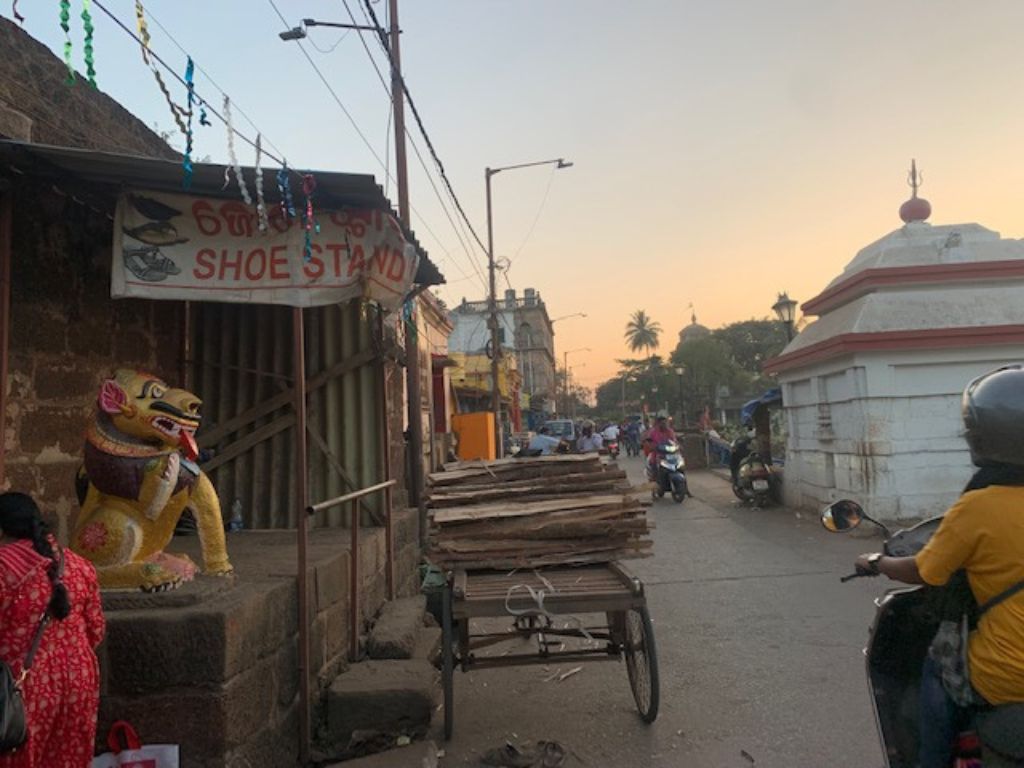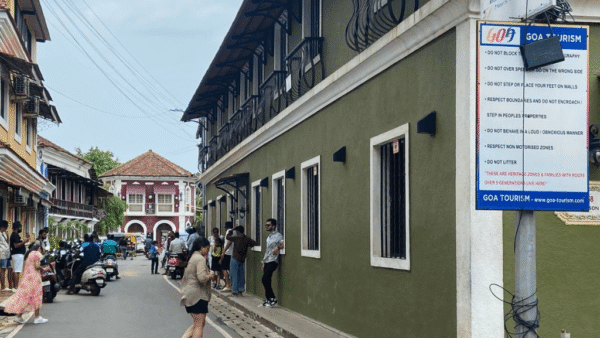Towards the southeast of the neighbourhood units in German architect Otto Koenigsberger’s master plan for Bhubaneswar, straddling the Biju Patnaik airport diagonally at one end and the city’s railway station at the other, lies Old Town. It is literally a corner on the Bhubaneswar map, a place so ancient that its structures – mainly temples – are dated back to the 11th century such as the popular Lingaraj Temple on the banks of the Bindusagar Lake.
It is only one of the hundreds of large and small temples here. Whether at the Lingaraj Temple or the 13th century Anant Basudeva temple, festivals and rituals revolve around the Lake; the Chandan Yatra, a 21-day festival that starts on Akshaya Tritiya, considered one of the three-and-half auspicious mahurats in the Hindu calendar, has temple deities taken on a boat ride in the evenings. Residents have held on to such traditions one generation after another even as the new city was built across the heritage town.
When Bhubaneswar was selected to be the capital of Orissa (now Odisha) in 1948 and one of newly-independent India’s three new towns, there was this Bhubaneswar already – the old temple town steeped in history. Its footprint covers 510 hectares across four villages – Kapila Prasad, Bhubaneswar, Goutam Nagar and Rajarani – had an estimated 700 temples, and was widely seen as the seat of the 2,500-year-old Hindu culture and an important pilgrimage centre.
The narrow alleys, mutt, dharamshalas, big old trees and numerous ponds and wells adjoining temples gave the temple town Bhubaneswar a distinct old-world look. The area near Bindusagar dotted with chawlo ghar – houses where grains were stored – had sevayats or those who serve in various capacities in the temples, living through generations. Time stood still here. Families of sevayats continued their temple duties passed on by their forefathers and lived in the ancestral home even as their families grew.
When the site near Old Town was selected for building the new city of Bhubaneswar in 1948, the question lingered about how the temple town would be integrated, if at all. As the new town was planned and built, mainly for bureaucrats and government employees, Old Town got left behind. It was not in the master plan, and, therefore, was out of the development and amenities associated with modern urban life.
It remained a quaint town with architectural treasures, religion at every doorstep informing its very character. In that sense, it was the polar opposite of what the then Prime Minister Jawaharlal Nehru wanted the new towns to be – modern, urbane, forward-looking and emblematic of the India he was moulding. This vision, including that of the bureaucrats who finalised the plan and led its implementation, had little imagination or design to integrate the old with the new, the ancient with the modern, the religious with the secular.
In his book Bhubaneswar: From a Temple Town to a Capital City, writer Ravi Kalia points out that Bhubaneswar was to be “a modern city intended to stand proudly by the side of its famous medieval sister.” The planning of the capital city was to be separate from the temple town so as to prevent the temple town from getting absorbed by the capital city. The new city was to have its own character, conditioned by the locality and the needs of modern administration. Modern buildings could not be decorated “with the architectural trimmings of past centuries”.
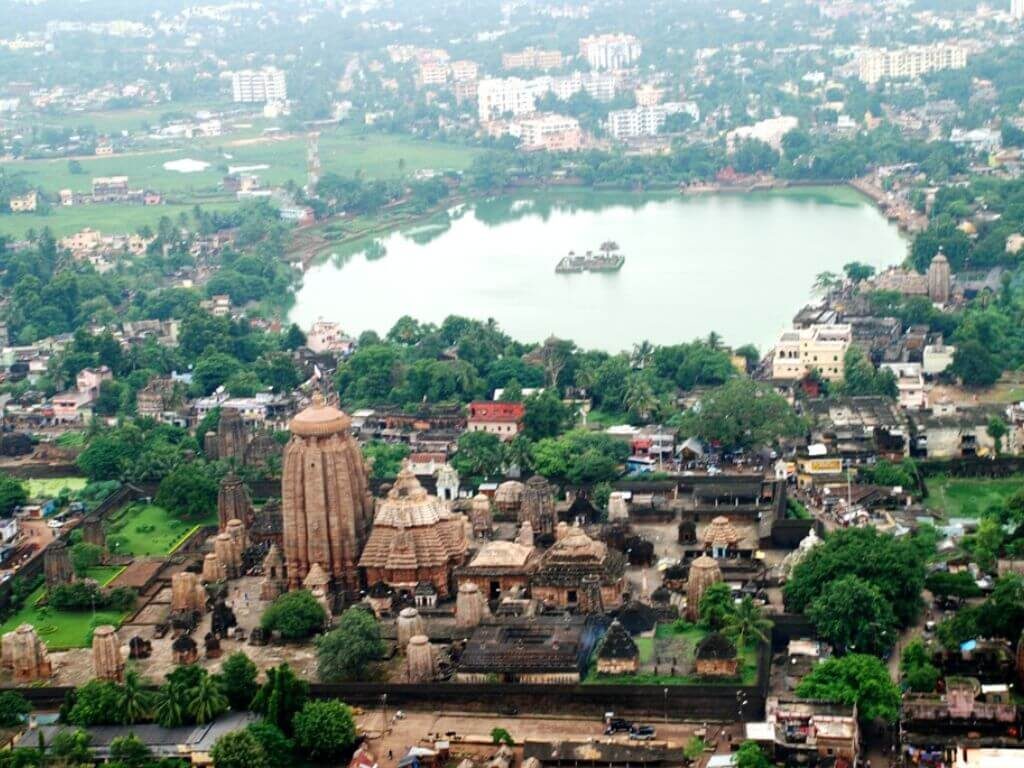
Separated by development
The non-inclusion of the temple town in the master plan has meant that, in some senses, the idea of modern India did not travel the little distance between the new and the old. The latter did not have amenities and facilities associated with urbanisation, people continued to live as they did in olden times.
The stark difference is evident in the typology itself – as one approaches the temple town, the wide roads of Bhubaneswar become congested lanes, the city’s noisy quietens in the tree-shaded temple areas, the jazzy branded stores, malls, restaurants and hotels are missing. Instead, the typically small-town winding lanes are bordered by houses jostling for space and, at places, almost merging with ancient temples and their water tanks.
While the city was built as easily accessible units, Old Town was a maze of lanes and alleys with houses, many of them thatched. It had single-screen Ravi Talkies and Kalpana Talkies, a school, a dispensary and only three cars at one time. The contrast between this and the planned layout of Bhubaneswar could not be starker. Even as the capital city was being built from scratch, not much changed in old Bhubaneswar.
However, the last three decades have seen Old Town bustling with pilgrimage tourism and new residents too. Many old buildings have been renovated or razed to build multi-storey structures; some single-storied structures were replaced by apartment blocks. Roads have been widened but at the cost of big beautiful trees and quaint old structures. The population in the old town grew, not the amenities.
“The land mafia has not spared the area — encroachments and flouting of laws are common,” says historian Anil Dhir, writing a book on Old Town’s streets. “The vernacular ecology or the spirituality of the place is no longer there, and it is becoming commercialised.”
Today’s Old Town
Bhubaneswar’s development did not impact the traditional ways of life here. Most residents are sevayats, who consider themselves proud guardians of a rich heritage, and are happy with the attention their town is getting as a tourist hotspot. “The changes happened slowly. Initially, no one from the city wanted to live in Old Town as it lacked amenities. There was no dearth of land here, so new houses came up. Slowly, people started mixing with us,” says Raja Garabadu, 46. Seven generations of his family have served in a temple here.
Forty-year-old Prafulla Swain, a former resident of Old Town, has five generations of his family serving in the Lingaraj Temple in palinki seva (carrying the Lord’s palanquin). “I grew up in Old Town, it’s my home. Bhubaneswar grew, so did Old Town but not as much. When my children see wide roads and tall buildings in the city, they obviously see a contrast. We tell them that our Bhubaneswar existed much before the new Bhubaneswar was built,” says Swain.
Residents remember that Old Town was full of huge age-less trees. Many of these were damaged in recurring cyclones, but around 400 trees were cut two years ago during the beautification drive. Swain is among the residents fighting to save the trees.
The distance between the new and old Bhubaneswar did not keep the land in the latter part free from commercial or market pressures.
“Before Bhubaneswar was made the capital, it was a small temple town. When the new city came up, the rich purchased huge acres of land. The compensation they gave to locals was not enough. There is a class divide in Old Town; we find very poor locals as well as rich people who came later,” says Dhir. The priests live like they used to earlier. “Culturally, they are very rich and different from people in the recently-developed modern housing societies in Bhubaneswar,” says professor Parameshwar Nayak, dean of Birla Global University, Bhubaneswar.
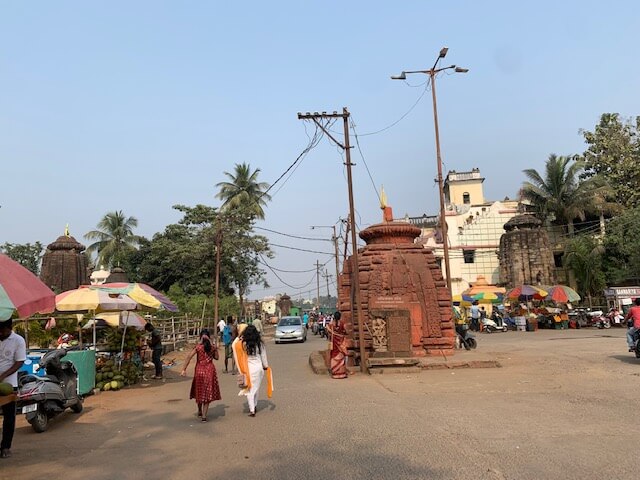
Photo: Shobha Surin
Safeguarding the old
The temple town is also known as Ekamra Kshetra, a heritage precinct recognised by UNESCO. The Ancient Monument and Archaeological Sites and Remains Act (AMASRA), 1958, states that a prohibited area comprises up to 100 metres in all directions from a protected monument, and a regulated area up to 200 metres. Yet, new buildings have come up near temples.
Across the old town, some British-era structures still stand – some like the Dak Bangla are neglected while others like Curzon Tower are still in use. The two-room Dak Bangla is crumbling though its roof is intact. Historian Anil Dhir, who wrote extensively about Old Town, notes in an online magazine[1] : “The Dak Bungalow was built sometime in the 1850s for the convenience of British officers and was also the staging point for mail runners of the Imperial Mail Service. It also served as a makeshift court house for proceedings held by the British officials. The many properties in the old town that were taken up by the gentry of Bengal under the draconian Sunset Law were auctioned at this place. It was also used by the surveyors of the Great Indian Trigonometrical Survey held between 1840-1870.”
Lord Curzon, the Viceroy of India, used to stay in this Dak Bungalow during his visit to Kalinga. He built a viewing tower, later known as Curzon Tower, at the north gate of Lingaraj Temple as non-Hindus were not allowed inside, to get a panoramic view of the cluster of temples. In the crevices of the crumbling structures, stories dwell too, such as patients getting cured with the well water from the Kedar Gouri temple. The well lies neglected, contaminated with sewage and debris.
People of old town
Raja Garabadu belongs to the suara or cook’s family who prepare ‘bhog’ at the temple. Every such family was allotted a kitchen attached to the temple. “My grandfather used to cook here. My father and uncle ventured into the hotel business and our service to the temple was pushed into the background. I try to go to the temple sometimes, I like to wear my traditional clothes of silk pata and participate in temple festivities,” says Garabadu. His son does not visit the temple kitchen. “The land was donated by the kings for our service. Now, we don’t want to part with it even if the government wants us to,” he adds.
A group of people following a particular profession live in one area or sahi. There are around 12 sahis in the temple town, including the dhobi sahi near Bindusagar Lake. “These areas have not changed, though some chawlo ghar have been converted into living spaces. Some houses have become smaller as plots and ancestral houses were divided,” Garubadu explains.
Land holdings changed too. “People from outside started buying plots in Old Town over the past 10 years. Now, there is no land left,” says Garabadu, “All temple ponds had fresh water springs but now most of them have dried and are polluted.” Deep inside Old Town, despite the influence of the new city, many old residents live the life they did earlier – except for the ubiquitous mobile phone. Sevayats are gradually embracing new professions and becoming less involved in temple work. Where sevayats and their families lived, there are non-locals and tenants now.
Odissi dancer Padma Shri-awardee Ileana Citaristi made this her home in 1996 after buying a plot and building her Indo-Italian house. She chose laterite stone for her house to be in sync with the temple surroundings. Ruing the neglect around, the Italian-born Citaristi says, “The capital city saw development and beautification, but not the Old Town.”
She cites the example of the well-preserved historic part of her hometown Bergamo in Italy. “The old part of Bergamo on the hill (Città Alta) is the most curated. The new city expanded on the plains below and the two are well-connected.” Venetian walls divide the city but the medieval and the modern are integrated making the city more liveable and sustainable, according to her. “Old Bhubaneswar too should get more amenities,” says the dancer.
Bhubaneswar’s mayor Sulochana Das asserts that the municipal corporation is trying to bridge the gap. “Bhubaneswar is a confluence of tradition and modernity. The integration of Old Town with the new is on. The old area is not a planned area but the Ekamra Kshetra project will beautify it and connect it well,” she says. In 2009, the Ekamravan Medicinal Garden opened on the banks of the Bindusagar Lake giving the area a green public space.[2]
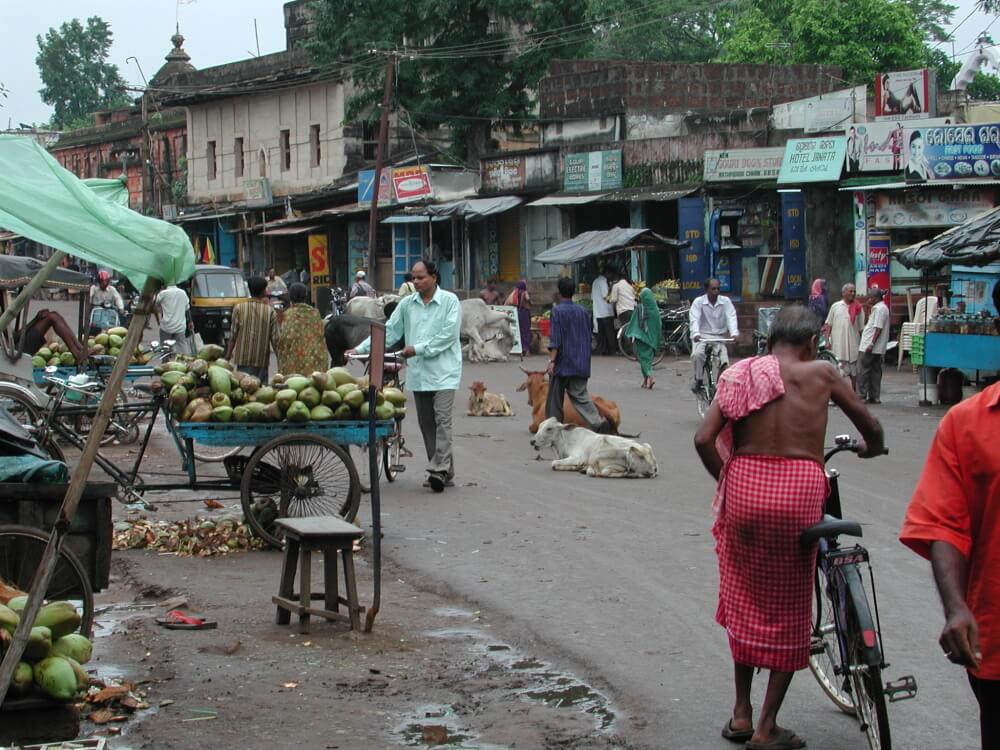
Photo: G.-U. Tolkiehn/ Creative Commons
Can they ever integrate?
As the new city expanded and offered job opportunities, residents of the old temple town began commuting to the city for professional work. Educational opportunities grew, so did work opportunities. English-medium schools helped residents look beyond the temple town. The pandas, or temple priests, now speak Hindi and English; the next generation has small shops or businesses.
Gradually, Old Town began to secure some basic civic amenities. Streets are cleaner and there are dustbins around, say the locals. The area around Lingaraj Temple, the main temple which sees the greatest number of visitors, has been beautified under the Ekamra Kshetra project. The town is clearly drawing tourists now and facilities that make the tourist-town economy are seen here.
The economic links between the new city and Old Town may strengthen, and more people may find purpose in the city, particularly the younger generation, many of whom seek jobs and settle there in “modern houses.” The temple town may become a modern urban space or a large pilgrimage commercial town such as Shirdi, Tirupati, and Akshardham under the current environment of consolidation of Hindu maryada.
The modern city and the heritage town continue to have their individuality. The twain did not meet in 1948; planners may not have integrated them in the masterplan but, beyond it, people are forging economic and social relationships to close the gap.
Shobha Surin is a journalist with 20 years of experience in newsrooms in Mumbai. An associate editor at Question of Cities, she is concerned about Climate Change and is learning about sustainable development.
Cover photo: Shobha Surin

